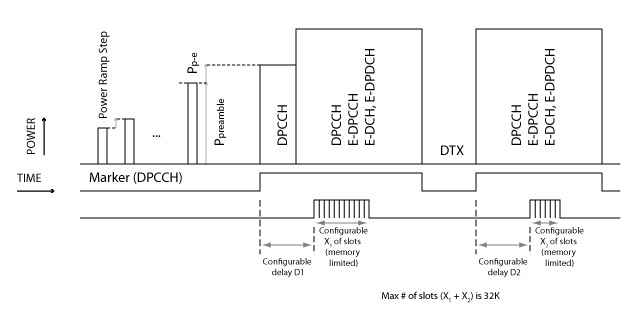
The PXB offers two methods of measuring S/N power at the PXB's output port(s): a measurement controlled through the Power Meter tab in I/O Output node that takes a single measurement of a signal's average power; and a SCPI-only measurement of a sequence of two data segments.
The PXB's standard, GUI-controlled power meters provide the ability preform averaged power measurements using threshold or marker-based gating, with the ability to holdoff the measurement by a number of samples to ensure the capture of stable data.
Output power meter control is available for each I/O output port block in the PXB user interface. SCPI commands are also provided under the :CONTrol:IO[:OUTput]:POWer node. See the following topics for more information:
Power Meter Settings (Output IO)
The GUI's standard power meters are sufficient for most measurements; however, some tests require true RMS power metering of signal data in a shorter amount of time than is possible using the standard meters.
Sequenced power metering provides the ability to measure the RMS power of a sequence of two different segments of data in a single transmission. Using sequenced power metering, a user can make power level measurements in seconds, rather than the several minutes it takes using more traditional power measuring methods.
Sequenced power metering is defined by a delay, a window length, and a number of windows. The measurement is triggered by a hardware signal which is routed to a user-selected marker. Measurements begin at the rising edge of the control signal, as shown below:

Sequenced power meter control is a SCPI-only feature. Commands are provided under the :CONTrol:IO[:OUTput]:POWer:SEQuence node. See the following topic for more information:
Power Meter Settings (Output IO)